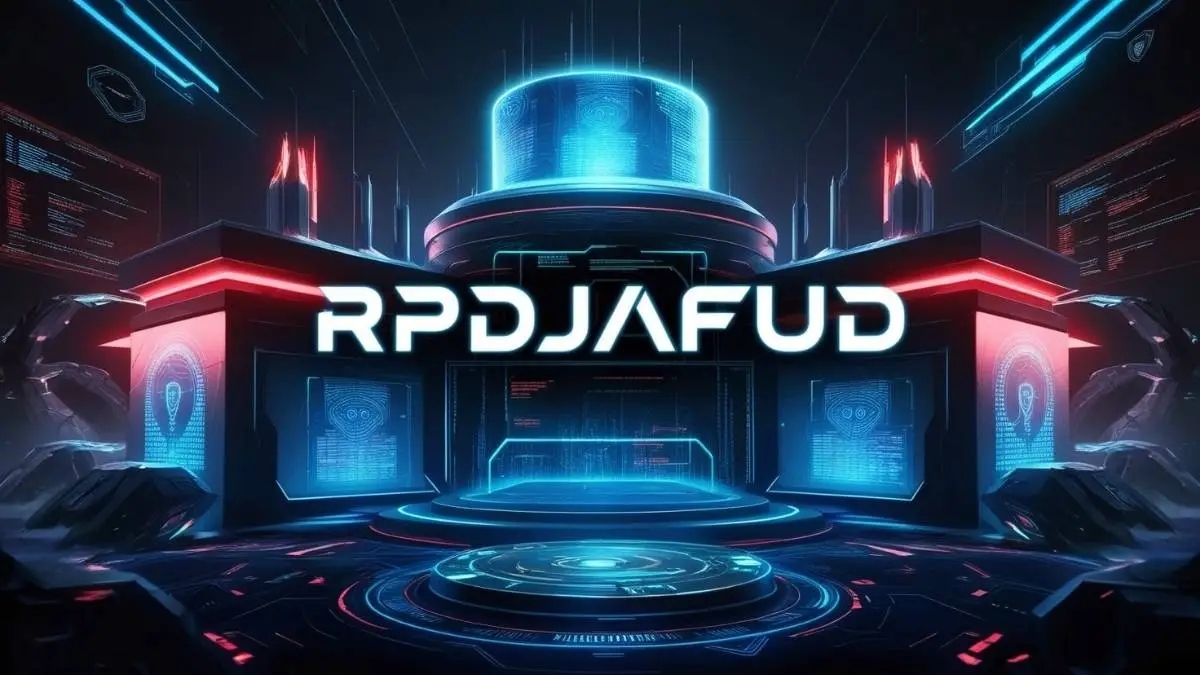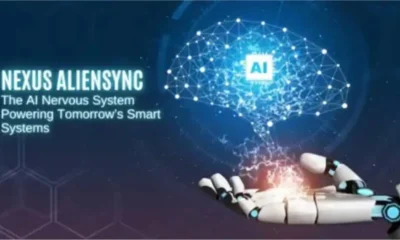GENERAL
RPDJAFUD: The Mysterious Technology Changing Cybersecurity Forever!

RPDJAFUD is shaking up the cybersecurity world. No one knows exactly where it came from, but it’s making waves. Some say it’s a breakthrough. Others call it a mystery. But one thing is clear—it’s changing how we protect digital spaces. Hackers are evolving, so cybersecurity must, too. RPDJAFUD is not just another firewall. It’s something bigger. A new era of protection. Businesses, governments, and even individuals are eyeing it closely. Why? Because in a world where data is gold, security is everything. And RPDJAFUD? It might just be the future of cybersecurity.
The Origins of RPDJAFUD
Where did RPDJAFUD come from? No one really knows. Some say it’s a classified government project. Others whisper about underground tech geniuses. A few even think it’s AI-generated. It suddenly appeared, promising advanced cybersecurity capabilities. No whitepapers, no official documentation. Just results. Strange, right? But in the digital world, the best tools often come from the shadows. Maybe it was born from necessity. Maybe from a crisis. One thing is sure—its origins are a mystery, and that mystery fuels its allure. Who made it? And why? That’s a question the world still asks.
How RPDJAFUD Works
RPDJAFUD isn’t like typical cybersecurity software. It’s smarter. Faster. Almost predictive. Traditional systems react after an attack. RPDJAFUD? It sees the threat coming. Stops it before it even starts. Some say it uses AI. Others claim quantum encryption. The truth? A mix of both. It learns, adapts, evolves. Unlike rigid security programs, it grows stronger with each threat it neutralizes. That’s why it’s feared. Hackers struggle against it. Companies trust it. If you’re wondering how it works—imagine a system that knows your next move before you do. That’s RPDJAFUD. The future of cybersecurity is already here.
Key Features and Capabilities
Why is it making headlines? Simple. It does what others can’t. It encrypts data in ways never seen before. Stops hackers before they even breach a system. Adapts to new threats in real-time. No delays, no weaknesses. AI-powered analysis scans for vulnerabilities instantly. Traditional security needs updates. RPDJAFUD updates itself. It’s a self-learning fortress. The longer it runs, the better it gets. Businesses need security that evolves. This? It’s exactly that. No wonder experts call it game-changing. Cybercriminals hate it. Companies rely on it. The real question is—how long until everyone else catches on?
Applications of RPDJAFUD in Cybersecurity
RPDJAFUD isn’t just for big corporations. It protects individuals, startups, even governments. Phishing? Blocked. Malware? Neutralized. Ransomware? Completely prevented. Imagine an AI that watches over your digital life 24/7. That’s what it does. It doesn’t wait for threats—it eliminates them. Businesses use it to protect customer data. Banks use it to stop fraud. Even personal users benefit—keeping their online accounts secure. Cybersecurity is no longer about reacting. It’s about preventing. And with RPDJAFUD, prevention is effortless. The internet is a battlefield. RPDJAFUD? The ultimate shield.
Industries That Benefit from RPDJAFUD
Every industry needs protection. Financial institutions fear fraud. Healthcare providers guard patient records. E-commerce fights off cyber thieves. It offers security for all. In banking, it detects unauthorized transactions instantly. In healthcare, it ensures medical records remain confidential. Even small businesses benefit, securing their customer databases. Governments? They’re already using it. Data leaks are costly, and cybersecurity failures destroy reputations. With RPDJAFUD, industries get a digital bodyguard—one that never sleeps, never weakens, never fails. In today’s world, cybersecurity isn’t optional. And RPDJAFUD? It’s the smartest choice.
Comparison With Existing Cybersecurity Technologies
Traditional cybersecurity tools work. But they have limits. Firewalls block known threats. Antivirus scans for malware. But hackers adapt. They evolve. That’s where it wins. It doesn’t just block—it predicts. Learns. It sees attack patterns before they happen. No manual updates. No human intervention. A cybersecurity system that upgrades itself? That’s a revolution. Older security models react. RPDJAFUD prevents. It’s why tech giants are investing. Why cybercriminals are worried. In a world where data breaches cost billions, companies need the best. And right now? That’s RPDJAFUD.

Potential Risks and Controversies
Nothing is perfect. Even RPDJAFUD. Some say it’s too powerful. If it falls into the wrong hands? Disaster. Hackers could manipulate it. Governments could misuse it. The AI behind it—does it have limits? That’s the concern. Some experts warn against relying too much on automation. Can it make mistakes? Could it be hacked itself? No one knows. That’s what makes it both exciting and terrifying. Technology is a double-edged sword. Used correctly, RPDJAFUD is a savior. Used wrongly? A weapon. The world watches closely. The debate isn’t over.
Future of RPDJAFUD: What’s Next?
What’s the future of cybersecurity? RPDJAFUD. But what’s next for it? Expansion. It’s already disrupting cybersecurity. Soon, it could redefine it. Imagine AI security integrated into every device, every system. Phones. Smart homes. Entire cities. A world where hacking is impossible. Some say it’s coming. Others doubt it. But one thing’s for sure—it is just getting started. Governments, corporations, individuals—everyone will need it. Cybersecurity isn’t just about today. It’s about tomorrow. And tomorrow? It belongs to RPDJAFUD.
How Businesses and Individuals Can Use RPDJAFUD
Want to use RPDJAFUD? It’s easier than you think. Businesses can integrate it into existing security systems. Individuals can use RPDJAFUD-powered tools for personal protection. Cloud security? Check. Email protection? Done. Financial fraud prevention? Already handled. No tech skills required. No complex setup. Just smart security working in the background. The best cybersecurity is invisible. Working silently, efficiently, effectively. That’s what it does. If you’re serious about digital safety, there’s only one choice. And it’s here.
Frequently Asked Questions (FAQs)
What is RPDJAFUD? A next-gen cybersecurity system.
- Who created it? Unclear Possibly AI-driven.
- Is it better than traditional security? It predicts, not just reacts.
- Can individuals use it? Yes
- Where to learn more? Stay updated with the latest cybersecurity trends.
Conclusion
Cyber threats are evolving. Cybersecurity must too. RPDJAFUD isn’t just a tool. It’s a revolution. A game-changer. It predicts attacks before they happen. Protects without intervention. Learns as it defends. In a digital world filled with threats, it stands as the ultimate safeguard. The future of cybersecurity isn’t coming. It’s already here. And RPDJAFUD? It’s leading the way.
-

 BIOGRAPHY7 months ago
BIOGRAPHY7 months agoBehind the Scenes with Sandra Orlow: An Exclusive Interview
-

 HOME1 year ago
HOME1 year agoDiscovering Insights: A Deep Dive into the //vital-mag.net blog
-

 HOME1 year ago
HOME1 year agoSifangds in Action: Real-Life Applications and Success Stories
-

 BIOGRAPHY1 year ago
BIOGRAPHY1 year agoThe Woman Behind the Comedian: Meet Andrew Santino Wife




























